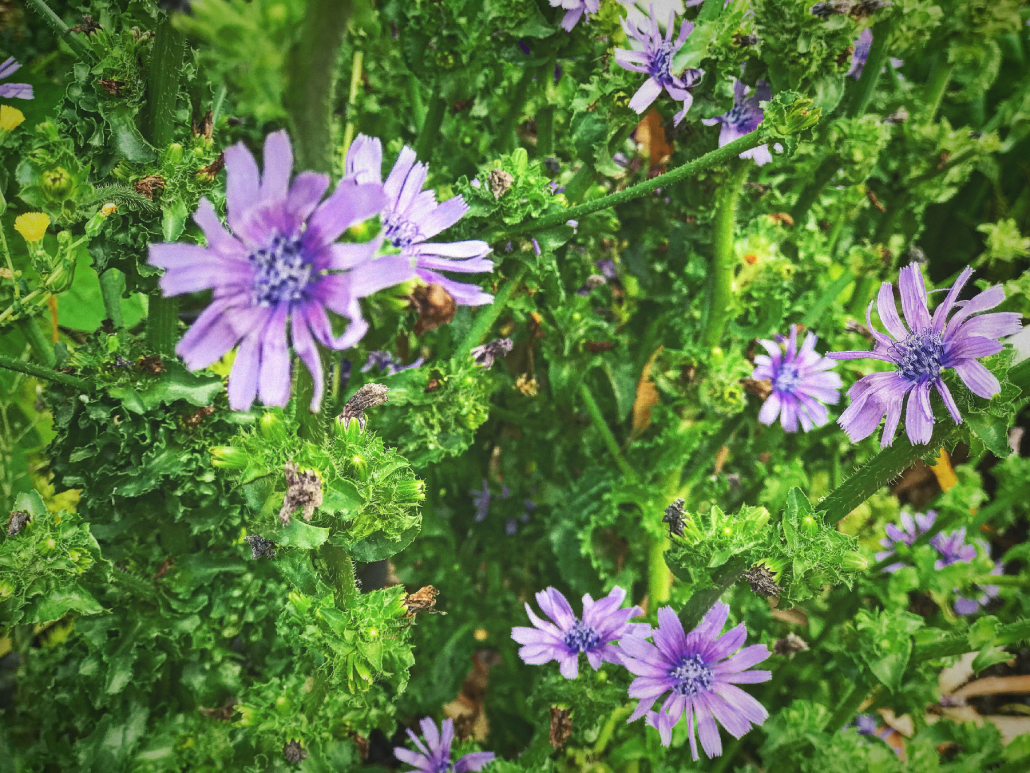Image: Chicory plant in flower. Anna’s garden (photo by Andrew).
‘The Promised One is near’
Andrew Collis
Advent 1, Year B
Isaiah 64:1-9; Psalm 80; Mark 13:24-37
Today is the first Sunday in the season of Advent. The Latin word means “arrival” or “coming”. On one level, we know that we will celebrate Christmas in a little under four weeks’ time. On another level, this can be a surprising event – for adventurous hands, hearts and minds. Faith is adventure.
Faith is about how we do things – with what manner of daring, trust and hopefulness – how we approach the rituals of the church (ancient and contemporary rituals) and how we approach the stories of the Bible. What is the promise of/in this reading?
I love these words from today’s psalm: “O God, return to us – / let your face smile on us, / and we will be saved!” God is a smiling God who wants to save or help us. We remember God as a smiling God, and we anticipate God appearing in many smiles.
And I love these words from today’s gospel (Mark 13:29,33,37): “Know that the Promised One is near, right at the door … Stay awake! … stay alert!”
Faith is about how we do things – with what manner of daring, trust and hopefulness – how we approach the rituals of the church, how we approach the stories of the Bible as well as the stories of the land (as best we understand that). What is the promise of/in this reading?
I love these symbols of life/hope in Mirrung Garden – the rain-soaked soil, the fragrant eucalypt mulch, the tender kangaroo paw and woolly bush, the lemon myrtle and bottle-brush … Mirrung, belonging, is a Dharug word – perhaps we hear it as a call … calling attention to country, to Gadigal sovereignty … calling for new conversation, decolonisation … deeper understanding of the gospel, wisdom, the mission of God.
How might we belong (how might we “grow into belonging”)? As settler Christians, how might we belong? Starting over, how might we belong? On the mystery, how might we belong?
Prayer, most simply, is call and response. God calls, “Where are you?” We respond, “Here we are!”
And Jesus encourages us to look around … we are here in the garden, on stolen and sovereign land. How might we come to understand this more deeply as worship space, as decolonised place, liturgical-Gadigal, richly symbolic? In consultation with Elders, what new symbols might emerge? What kind of seating, movement, altar-table, baptismal font, pulpit? What nature of song or dance?
“Here we are! We are here!”
Jesus encourages us to look around, to notice when others are in trouble, when people are worried or frightened, when the animals, the earth and skies are showing signs of distress …
On the climate and nature crisis, the science is clear. We are on track for 3C of global heating, the UN warns ahead of the Cop28 climate summit. We have to stop burning fossil fuels, and stop destroying the natural world …
“Here we are! We are here!”
Aunty Linda points to signs of over-watering … the harshness of the western sun … scavenger birds and invasive weeds …
We come, again, to realise our propensity for anxious grasping, repeating possessive patterns – appropriation, control …
We are encouraged to stay alert for someone … for something other than control, other than conflict and despair … something more respectful, more humane, more sustainable, fair, kind …
Next week’s Advent theme is “peace”. With Miriam and Tevita, we pray: God everlasting, through changing seasons and calamities of life, may all receive your promise of peace. Amen.




